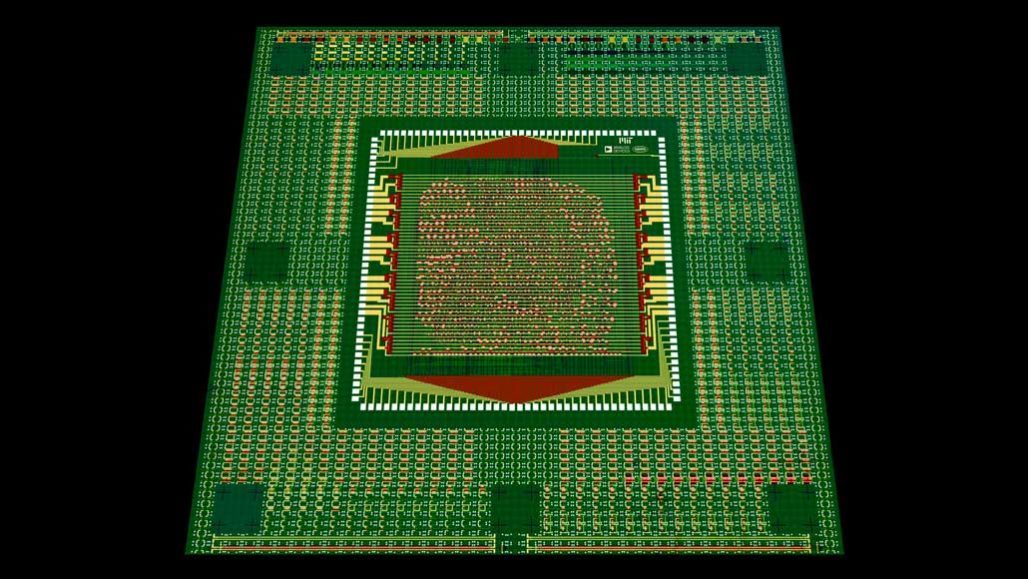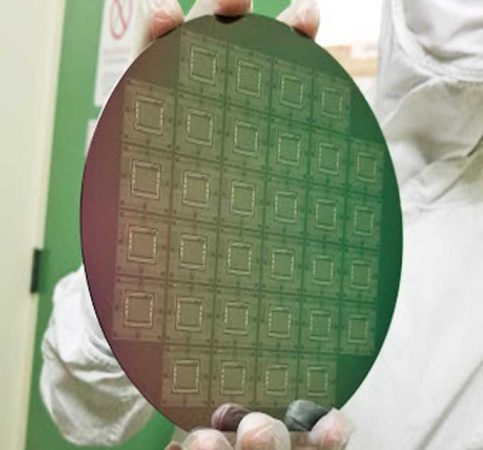Computer chips from carbon nanotubes, not silicon, mark a milestone
The prototype could give rise to a new generation of faster, more energy-efficient electronics

The sun may be setting on silicon. The first computer chips made from carbon nanotubes (one pictured) are here.
G. Hills et al/Nature 2019
A new type of computing chip could be a game-changer. That’s because its transistors are not made of silicon. Transistors are tiny electronic switches that together perform calculations. A new prototype uses carbon nanotubes. It is not yet as speedy or as small as the silicon devices found in today’s computers, phones and more. But these new computer chips may one day give rise to electronics that are faster and use less energy.
Researchers describe their advance in the August 29 Nature.
This is “a very important milestone in the development of this technology,” observes Qing Cao. He’s a materials scientist at the University of Illinois at Urbana-Champaign. He was not involved in the work.
The heart of every transistor is a semiconductor component. It’s usually made of silicon. This element can act like an electrical conductor. It also can act like an insulator. This lets a transistor have an “on” and an “off” state. When on, current flows through the semiconductor; when off, it doesn’t. And this on/off state is what encodes the 1s and 0s of digital computer data.
Max Shulaker is an electrical engineer. He works at the Massachusetts Institute of Technology in Cambridge. “We used to get exponential gains in computing every single year,” he says. Computer engineers were able to do so by building smaller and faster silicon transistors. But now, he says, “performance gains have started to level off.” Silicon transistors can’t get much smaller and more efficient than they already are.
Carbon nanotubes, though, are almost as thin as an atom. And they ferry electricity well. As a result, they make better semiconductors than silicon. In principle, carbon nanotube processors could run three times faster than silicon ones. And they would consume about one-third as much energy as silicon processors, Shulaker says. But until now, carbon nanotubes have proved too finicky to use in complex computing systems.
Carbon computing
One issue comes when a network of carbon nanotubes is deposited onto a computer chip wafer. At that point, the tubes tend to bunch into lumps. This prevents the transistor from working. It’s “like trying to build a brick patio, with a giant boulder in the middle of it,” Shulaker says. His team solved that problem. They spread nanotubes on a chip. Then they used vibrations to gently shake unwanted bundles off the layer of nanotubes.

The team also faced another problem. Each batch of carbon nanotubes contains about 0.01 percent metallic nanotubes. Metallic nanotubes can’t properly flip between conductive and insulating. So these tubes can muddle a transistor’s readout.
Shulaker and colleagues searched for a workaround. To perform different kinds of operations on bits of data, transistors can be configured in various ways. The researchers looked at how metallic nanotubes affected different configurations. They found that defective nanotubes affected the function of some configurations more than others. This is similar to the way a missing letter can make some words illegible, but leave others mostly readable. So the researchers carefully designed the circuitry of their microprocessor. They avoided configurations that were most confused by metallic-nanotube glitches.
“One of the biggest things that impressed me about this paper was the cleverness of that circuit design,” says Michael Arnold. He’s a materials scientist at the University of Wisconsin–Madison. He was not involved in the work.
The resulting chip has more than 14,000 carbon-nanotube transistors. It executed a simple program to write the message, “Hello, world!” This is the first program that many newbie computer programmers learn to write.
The new chips are not yet ready to unseat silicon ones in modern electronics. Each carbon transistor is about a millionth of a meter across. Current silicon transistors are smaller. They are tens of billionths of a meter across. Each carbon-nanotube transistor in this prototype can flip on and off about a million times a second. Silicon transistors can flicker billions of times per second. That puts nanotube transistors on a par with silicon transistors of the 1980s.
Shrinking the nanotube transistors would help electricity zip through them with less resistance. That would allow the devices to switch on and off faster, Arnold says. They could also align the nanotubes in parallel, rather than using a randomly oriented mesh. This could increase the electric current through the transistors. That would further boost processing speeds.







